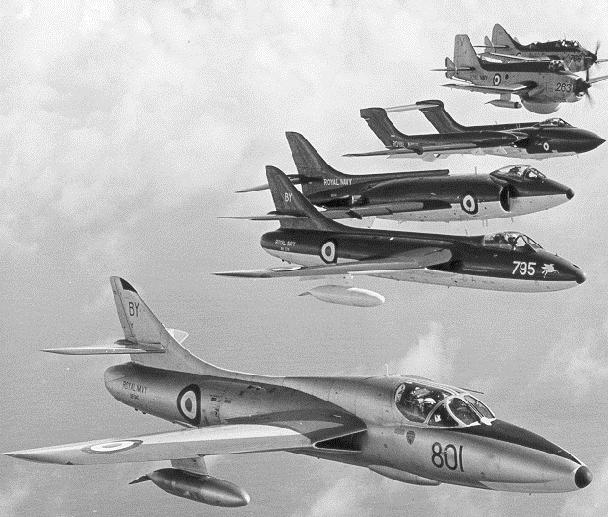

~~~~~~~~~~~~~~~~~~~~~~~~~~~~~~~~~~~~~~~~~~~~~~~~~~~~~~~~~~~~~~~~~~~~~~
This non commercial website came about as a result of research I carried out on the career of my late father, Bob Woolley, who was a pilot in the Fleet Air Arm between 1960 and 1968. During this period he was a front line Sea Vixen (FAW1) pilot with 893 Squadron in HMS Victorious (1963/64) and later a qualified flying instructor (QFI) in the Hunter with 759 Squadron at RNAS Brawdy. Following completion of his short service engagement in August 1968, my father left the Royal Navy and joined the Fleet Requirements Unit (FRU) at Bournemouth (Hurn) Airport. Tragically he was killed six months later on 13th February 1969 when a Meteor T7 he was being examined in - in order to extend his QFI status - developed a flat spin and crashed in remote farmland near the village of Winterborne Houghton in Dorset. His examiner that day, Flt. Lt. R.V. Patchett RAF, was also killed.
At the time I was aged three and, whilst I as I grew up I became aware of my father's flying career in very general terms, it is only in recent years that I have developed a closer interest in his achievements. In addition to learning a great deal from various reference books, magazine articles and also from the excellent records and research centre at the Fleet Air Arm Museum, I am extremely grateful to a number of my father's former colleagues who have kindly responded to my various requests for information. There is no substitute for first hand experience and I have found your recollections of both my father and of your own experiences fascinating and invaluable - my thanks to you all.
During my research I was struck by what I perceived as a lack of good quality books about the Fleet Air Arm during the 1960s. Videos of archive film footage from this decade are even harder to come by. This is a great shame and it does seem to me that this period of the Fleet Air Arm's history does not receive the public recognition and acclaim it deserves. During the 60s the Cold War was at it's coldest and the Fleet Air Arm's role in keeping the peace was a vital one. Five aircraft carriers were in commission at the start of the decade - Ark Royal, Centaur, Hermes, Eagle and Victorious. At all times two were stationed east of Suez ready to respond to conflicts and appeals for help that arose in places as far apart as Aden, Kuwait, Kenya, Tanzania, Rhodesia (Beira Patrol) and Malaysia.
The challenges and hazards that existed during this period of Naval aviation were immense. Large, powerful jets, namely the Scimitar, Buccaneer and Sea Vixen were introduced on carriers which had been designed and largely constructed during an era when much slower piston powered aircraft were still in service. The skill required was great and the margin of error very small - particularly on the smaller carriers Centaur, Hermes and Victorious. Consequently the risk of an accident - especially prior to the re-introduction of Landing Safety Officers - was very high. No fewer than 193 people lost their lives during flying operations for the Royal Navy during the 1960s. All aircrew who served in the Fleet Air Arm at this time deserve the utmost respect for their bravery and skill. Therefore it is my intention that this website should be more than just a purely personal tribute to my father and, albeit in a very small way, go some way to redress the imbalance referred to above.
At all times I have tried to stick to the facts as I have either read them or been told them and I have tried to prevent my imagination from getting the better of me. However, in view of the fact that I have no personal experience of the contents of these pages, mistakes and shortcomings are perhaps inevitable. I would therefore welcome any feedback - please feel free to e-mail me with any comments and observations. I would also urge everyone who served in the Royal Navy during the 1960s to write up their own experiences as your memories are a part of Fleet Air Arm history. Please view the Society Of Friends of the Fleet Air Arm page for more details on how you can receive help in doing this.
Finally, I am delighted that there are many good quality photographs and slides in my father's collection and I am pleased to share some of these with you. In particular the colour slides taken by him on HMS Victorious during 1963/64 as I believe that colour photos of Sea Vixen FAW1s and Buccaneer S1s in front-line service are very rare.
Mark Woolley
(Dorset, UK. November 2003)